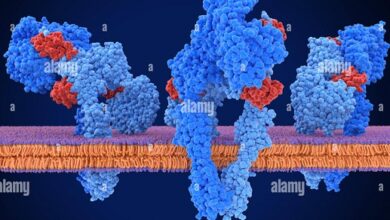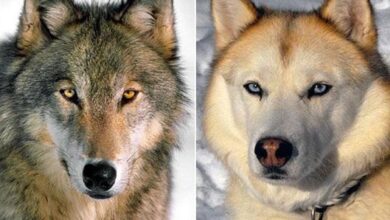What is Lamarck’s theory and the postulates of evolution
The Lamarck theory of evolution or Lamarckism defends the idea that an organism can pass characteristics acquired during its lifetime to its descendants. It is also known as heritability of acquired traits or mild inheritance.
Lamarck (1744-1829) was a French naturalist, soldier, biologist, academic and one of the first advocates of the idea that acquired characteristics of living beings can be inherited.
Lamarck’s postulates are theories of the evolution of species, formulated by the famous French naturalist Jean Baptiste Lamarck.
These theories emerged as a result of the constant observation of nature, the adaptation processes of living beings and paleontology , mainly in invertebrates. His scientific positions are constituted by many as pioneers in the field of evolutionary studies.
Lamarck evolution concept
Lamarck’s main hypothesis has its starting point in the creation of the world, where nature and species were designed in perfect balance.
Thus, as the characteristics of the environment change, species develop new properties that allow them to survive and continue.
These transformations occur gradually and through what is known as transmission of acquired characters.
The transmission of acquired characters refers to the process of hereditary transfer of certain adaptations that living beings develop during their life cycle.
A good example might be the ancestors of dolphins. Millions of years ago, these mammals roamed the earth; however, fifty million years ago the surrounding conditions were transformed, forcing them to spend more and more time in the water.
Finally, the new generations were changing their anatomy until they became the animals we now know.
Although Lamarck has contributed to the construction of the premise of transmission of hereditary characters, he has already been raised by other scholars on the subject.
The biologist’s true merit was to advance the idea that genetically transferred modifications extended the evolutionary spectrum, thus excluding natural phenomena such as extinction.
The compilation of his scientific discoveries is in his main work called Philosophie Zoologique ( Zoological Philosophy ). It was first published in 1809.
Lamarck’s Theories of Evolution: Postulates
1- Use and disuse of organs
For every living being, the frequent or constant use of any organ gradually makes it more dexterous, stronger and more resistant, strengthening it little by little.
On the contrary, the lack of use of the same organ or another, makes it useless, until it is finally suppressed.
In addition, the change of activities or purposes performed by an agency may occur. Over time, this will be reflected in a series of changes in your anatomy, making you better suited for everyday activities.
In 1876, Friedrich Engels published The Part Played by Labor in the Transition from Apen to Man ( The Role of Labor in the Transformation from Ape to Man ). In this article, Engels states that the evolution of the human being as we know it was presented due to a series of factors, such as the environment, the climate, the need to hunt and build tools.
These facts forced primitive man to become a biped, freeing his hands from the burden of facilitating mobility and giving rise to new activities that required greater precision and skill. In short, the need to work, build and create was the key to the success of this evolutionary process.
Another interesting example can be presented by Lamarck in Philosophie Zoologique. Giraffes inhabit the African continent in rough terrain, where survival conditions are extreme.
This curious specimen has developed a longer neck and front legs compared to its hind legs. Thus, he manages to reach six meters in height and can obtain food from the leaves of trees with ease.
Always committed to field work, Lamarck also observed several species of birds from which he also drew some conclusions.
There are birds that spend most of their lives on trees, they got special hook-shaped claws. Those that hunt insects or fish, but generally do not wet their bodies, have developed long, featherless limbs. In the case of swans, the presence of long necks and short legs, adapted to the water, is evident.
Currently, it is analyzed how the use of mobile devices has modified the habits and even the mental structure of the human being.
Today, most people have a wide variety of technological devices at their disposal, where large amounts of information are exchanged.
In this sense, many dare to say that man has changed his data processing dynamics, he has even developed great skill with his fingers, especially the thumb. Is this the new change in the environment that will drive new evolutionary processes?
2- The transmission of acquired characters
Lamarck considered that the creation of nature was done by divine work. From there emerged the first forms of simpler life.
Climate change and the presence of new species are a constant reality, forcing these creatures to modify their behavior.
To ensure continuity, the new individuals that emerge from reproduction bring with them information evidenced in characteristics such as strengthening or disappearance of organs, presence or absence of hair, acuity or disappearance of some senses, among others.
In 1802, Lamarck gives an example with two newborns of the same species, but with different sex. One of them has his left eye bandaged for life.
Upon reaching the stage of reproductive maturity, these two mates bring forth new offspring whose left eye will also be bandaged. It can be said that if the same is done for many generations, the left eye will probably disappear and the right will change its location.
Extinction or evolution of species?
Lamarck never refuted the idea about the creation of the world by the work of God. This belief served as a reference for what is considered one of his most controversial theories. A postulate that, during the 20th century, was on the lips of supporters and detractors.
For him, if the creation of the world was perfect, why should the extinction of species be considered? Based on his numerous studies, Lamarck argued that evidently the species considered extinct would have undergone a series of modifications in their anatomy, resulting in other species.
Many of these beings had evolved into new species, others would not have been discovered because they were probably inhabiting lands unexplored by humans or under the depths of the sea.
Lamarck said that if he recognized every species of animal on the planet, a linear series could be created. Each of them would differ from the others by slight differences in their anatomy.
He also assured that there were very sharp differences between them, something that was due to the fact that at that time there were species to be discovered.
The discovery of the platypus and the echidna, at the end of the eighteenth century, mammals with certain reptilian characteristics, such as oviparous reproduction, contributed positively to Lamarck’s claims.
According to him, the condition for the characteristics of a living being not to be altered was precisely that the environment in which it inhabits did not undergo any modification.
On one occasion, Étienne Geoffroy Saint-Hilaire brought a large collection of mummified animal bodies. Interestingly, they showed no change from the species at the time, a fact that reinforced Lamarck’s theories.
Lamarck’s contributions to biology
Briefly, Lamarck’s legacy in the field of science and biology can be summarized as follows:
- Living things have the ability to adapt to an ever-changing environment. This foundation, considered the first evolutionary theory, was the basis of new research throughout the 20th century.
- Lamarck first used the word “Biology” to refer to the science that studies living things.
- Although his contributions were controversial and questionable at the time, his interest from university teaching to the study of living invertebrates and fossils earned him the title many years after the founder of invertebrate paleontology.
- He was the first scientist to separate crustaceans, arachnids and annelids from insects.
- He had important approaches to cell theory, stating that no body can have life unless it is composed of cellular tissues.
- Lamarck denied the extinction processes of some species, arguing that what really happened could be interpreted as a series of modifications in the anatomical structure of the animals. Something that made them more apt to move in their own environment.
- Lamarck separated the organic from the inorganic world.
- Like Darwin, he claimed that the Earth was extremely old, organisms evolve without being fully aware of it, and there is no way they can be as old as nature. For this, he took into account that, after several million years creating the Earth, the first forms of life appeared, basically unicellular beings.
- He proposed the concept of geological catastrophism, which refers to the theory that the origin of the earth was catastrophic.
- He emphasized that the nature of species was always inclined to evolve from the simple to the complex. You can highlight the evolution from monkey to contemporary man.
Differences and similarities between Lamarck and Darwin
similarities
- The most important similarity between Lamarck’s and Darwin’s theories is the claim that biological mechanisms are based on the adaptation that organisms have to their environments, over the years and from generation to generation.




